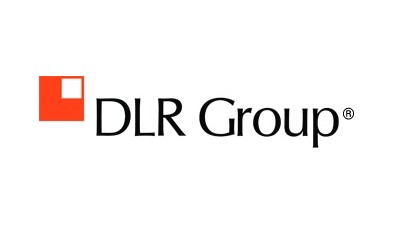Office Wellness Should Be More Than Just A Marketing Ploy

Open office has become a buzzword. Companies use the promise of dense, collaborative atmospheres and dynamic workplace culture as a means to attract top talent. But the rush to build these spaces, coupled with rising rents and low vacancies in major markets, has led to missteps in office wellness.
This has caused some users to push back against the development of open office.
Design firm DLR Group plans to change the conversation. The company has taken a holistic approach to designing open-office workplaces. The company uses data and a three-pronged strategy to prove that an emphasis on office wellness can have significant financial benefits.
“We believe that when the open office is designed correctly it creates the best culture for innovation, collaboration and self-worth,” DLR Group principal Jeremy Reding said.
1. People: creating choice
The rise of mobile technology has made it possible for many employees to work from anywhere. The line between work and home has blurred, and companies need to account for this new demand for flexibility.
The answer is personal choice, or mass customization at the individual level.
“The automobile industry is a key example, where you select a make/model and then customize the color, the materials and the technology to your liking," Reding said. "Workplace design needs to work in the same way.”
Creating choice was a central point in Nestlé's renovation of its Cleveland HQ. When the company realized that between 40% and 50% of its employees’ time was spent on collaboration-based activities, it partnered with DLR Group to design an office that met this demand. The renovated office gives employees a mix of different focus and collaboration areas, in addition to personal workstations.
2. Place: building a social hub
Having a work environment choice adds to employees' overall experiences. The offices of the past offered two choices for work: desks or conference rooms.
Modern offices have branched out into intermediary spaces, creating areas for quiet concentration, loud brainstorming, grabbing a cup of coffee or taking a companywide meeting.
“We need variety,” Reding said. “By delivering project-based choice we allow people to work in a way that supports the way our brains function. Choice enables users to do their best work throughout the day.”

3. Culture: make people want to stay
People-focused design only works when those people are encouraged to use it. An office culture where not being seen at your desk is frowned upon, or a workspace that is noisy and has poor lighting can lead to unhappy staff, Reding said.
Before pens hit the paper, DLR Group begins every project with a cultural analysis to understand, from employees and leadership, where the company is now and where they want it to head in the future. Bringing this conversation to the forefront of the process ensures that users are empowered to use the new workspace.
Appealing to tech companies
While prioritizing office wellness sounds good on paper, being able to prove the impact of improved workspaces through data-backed design resonates with businesses. Tech companies have taken an interest in DLR Group's approach to quantifying office wellness initiatives, as it mirrors their own approach to product innovation, Reding said.
Rather than just say that indoor air quality or thermal comfort is important, DLR Group proves it with real-time monitoring in all of its offices nationwide. The company aims to be the first to achieve portfolio-wide RESET certification, the world’s first building standard to assess the health performance of indoor spaces in real time.
Data gathered pre- and post-occupancy can further influence design. A model of daylight penetration can lead to modifications in workspace placement, and observing employee choice can help managers identify and optimize underutilized space.
Tech companies dominated the San Francisco office market this year. The city has become an attractive location for DLR Group's data-backed wellness approach.
The payoff
User experience and health now top the list of office priorities, Reding said. Companies are realizing that taking care of their people will lead to greater retention, improved productivity and increased profitability. While companies are focused on their bottom lines, DLR Group has found wellness initiatives more than make up for the initial financial investment.
For a recent client, DLR Group calculated how many years it would take to pay off its investment in a high-performance office design that emphasized people, place and culture.
“Two years,” Reding said. “This didn’t even consider that you would likely have less turnover, recruit better talent and have a happier workforce.”
DLR Group will touch on its approach to collaborative and wellness-based design at Bisnow’s San Francisco State of the Market event Jan. 10.
To learn more about this Bisnow content partner, click here.

